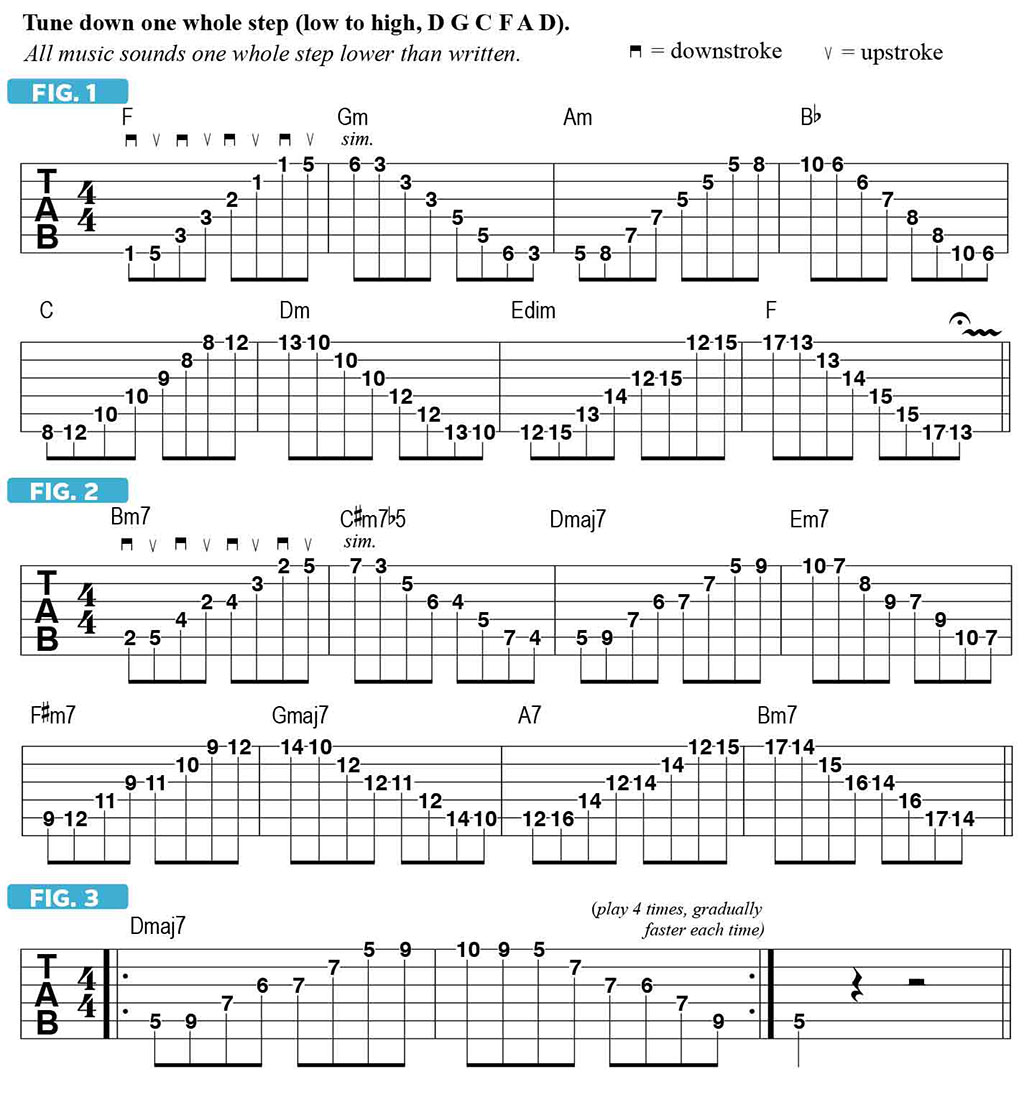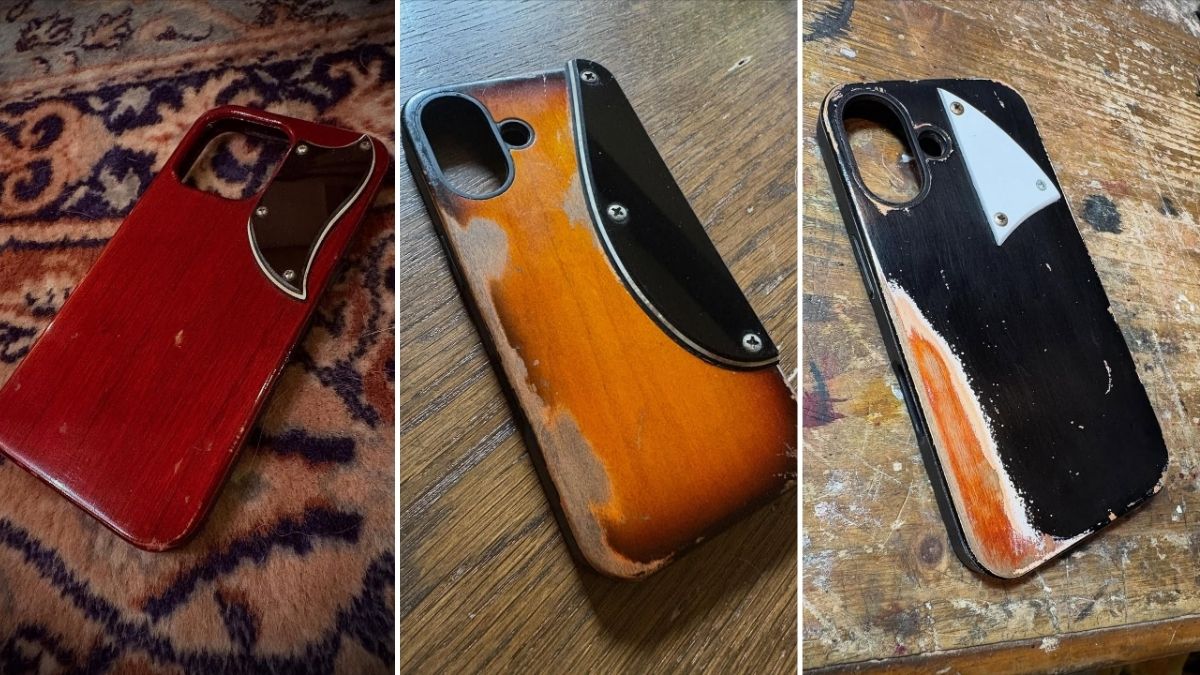Applying Six-String Arpeggio Exercises to the Seven Modes
Learn a mode-based application of some of Jason Richardson's top six-string arpeggio exercises.
In this lesson, I’d like to elaborate on the six-string, two-octave arpeggio-playing techniques I presented last month, by demonstrating a modes-based application. Previously, I outlined minor and major triadic forms as they fall on the fretboard in a single position, primarily utilizing a one-note-per-string approach, with the exception of the low and high E strings, upon which two notes are played. Let’s now build on this framework by moving through the diatonic three-note triads that are based on the F major scale (F G A Bb C D E) and thus live within key of F major, followed by an expansion to four-note seventh-chord forms.
I generally prefer to not do any barring when moving from one note to the next, instead switching fretting fingers sequentially, as this eliminates any ringing together of consecutive notes. This approach results in some unusual fret-hand manipulations as I quickly pivot from, say, the index finger to the middle, then back to the index, or the middle to the ring to the index, as I play through an arpeggio shape. Once you become accustomed to doing this, however, I believe you’ll appreciate the sonic benefits from what may at first feel a little awkward. Regarding the pick hand, I use strict alternate (down-up) picking technique as I ascend and descend across the six-string patterns. Just as eliminating barring prevents two notes from ringing together, avoiding the sweeping technique of dragging the pick across two or more adjacent strings in a single downward or upward motion will yield a cleaner and more precise performance, with clear articulation of each individual note.
FIGURE 1 has us moving through the mostly major and minor triads that are diatonic to the key of F major, alternately ascending and descending across two octaves with each successive shape, in a rhythm of even eighth notes. The implied chord progression here is F Gm Am Bb C Dm Edim. As we move through the patterns, the modal references are F Ionian (F major scale), G Dorian, A Phrygian, Bb Lydian, C Mixolydian, D Aeolian and E Locrian.

Be sure to alternate pick throughout and strive for each note to sound as clear as possible. When playing consecutive notes on the B and high E strings, I break my “no barring” rule (sort of ) by rolling my index finger from one string to the next. Using this partial barre is acceptable as long as you let go of the string after picking it and aim for the same clarity achieved when switching fretting fingers when moving from one note to the next.
Now let’s move the idea over to the fifth string and expand the arpeggios to fournote seventh-chord forms that are diatonic to the key of B minor, the relative minor key of D major. As shown in FIGURE 2, the outlined progression is Bm7 C#m7b5 Dmaj7 Em7 F#m7 Gmaj7 A7 Bm7.
Arpeggiating through the seven modes in this way to me sounds more musical than simply repeating the same arpeggio all over the fretboard. Moving through the modes in this way has a “canon”-like feel, in that the sequence of the successive melodic/harmonic content of each individual mode creates the impression of constant chordal resolution as we move from one modal-based arpeggio to the next.
A beneficial exercise is to take each individual arpeggio pattern shown in these figures and play it both up and down repeatedly, as demonstrated with Dmaj7 in FIGURE 3. Gradually increasing the tempo while repeating the two bar sequence will definitely help sharpen both your picking and fretting technique.
All the latest guitar news, interviews, lessons, reviews, deals and more, direct to your inbox!
Jason Richardson is best known for his work with All Shall Perish, Born of Osiris and Chelsea Grin. He’s currently lead guitarist for All That Remains.
